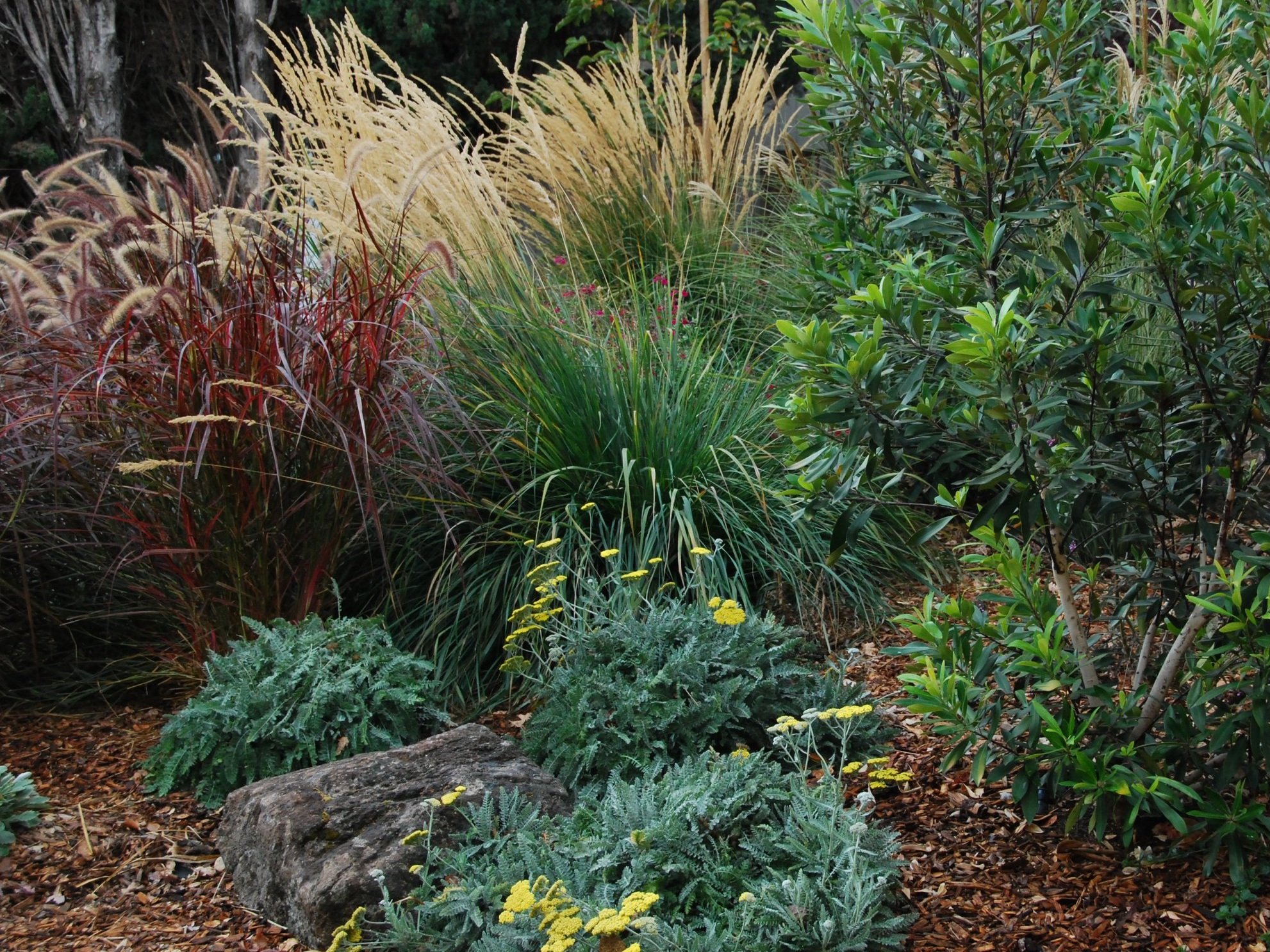Designing the Planting Plan: Plant Types
The flowers may be the least interesting part of this Palo Alto planting design.
As we get to know a client, we ask whether they have any favorite plants they would like included in their landscape design. Often they share idea books they have created on Houzz, Pinterest boards, Instagram collections, and so on.
Not surprisingly, these collections are usually brimming with photos of gorgeous flowers. And who doesn’t love flowers? But flowers come and go; so for a dynamic landscape that will look great in every season, we build our landscape designs around several other attributes.
First, we consider a plant’s life cycle. “Perennial” is a term we usually associate with small flowering plants, but it really refers to any plant that lives for more than two years and usually (though not always) produces flowers and/or seeds each year. A groundcover such as the diminutive Heuchera maxima is a perennial, but so too is a tree such as the mighty Coast Redwood!
If a species does die after flowering, it’s not a perennial but an “annual” (lives for only one growing season) or a “biennial” (lives for two growing seasons). In the garden, the sooner a plant completes its life cycle, the sooner it needs to be replaced, so for a low-maintenance landscape we strongly prefer perennials to annuals or biennials.
Woody Ribes sanguineum, herbaceous Heuchera maxima, and evergreen Festuca glauca in a Palo Alto garden.
Second, we consider cellular structure, distinguishing between “herbaceous” and “woody” plants. An herbaceous plant has soft, flexible stems that may die to the ground in winter, while a woody plant develops denser, harder cells that can survive harsh weather. Heuchera maxima, whose stems you can pinch off with your fingernails, is herbaceous; a redwood tree is obviously woody.
In designing a planting plan, we recognize that herbaceous plants—whether perennial, annual, or biennial—may grow faster but can leave gaps in the landscape when they go dormant. So a landscape comprised entirely of herbaceous plants (such as the venerable English cottage garden), while stunning in May, may be barren in January.
Third, we consider the persistence of a plant’s foliage—”deciduous” or “evergreen.” Deciduous plants shed their leaves with the onset of shorter days or cooler weather, while evergreen plants hold most or all of their leaves throughout the year. (Some species may be categorized as “semi-evergreen,” because they lose many but not all of their leaves in winter.)
Many deciduous plants have attractive autumn color before their leaves fall, while most evergreen plants have consistent foliage color throughout the year. Evergreen plants give the landscape structure, especially in winter when deciduous plants are skeletons and herbaceous plants have died back. Deciduous plants, particularly trees, are useful for providing shade in summer but allowing sun through in winter.
Despite these technical distinctions, very commonly you’ll find the word “perennial” used to describe species with a perennial life cycle, herbaceous stems, and deciduous foliage.
With so many characteristics to consider, it’s useful to organize plants into groups and develop lists of the plants that are available for a desired effect or quality—for instance, “woody evergreens” or “herbaceous perennials.” Since we design almost exclusively with perennial species, such organization might look like the following matrix:
These generalizations aren’t perfect: a woody “evergreen” such as Lantana montevidensis, for example, may become deciduous in particularly cold weather; and the “herbaceous” Epilobium canum is known to develop woody stems at its base.
There are many other factors to consider in plant selection—sun and water needs, heat and cold tolerance, susceptibility to frost (“tender” or “hardy”), growth habit (“groundcover,” “shrub,” or “tree”), foliage color and form, and of course the color and season of those wonderful flowers. We’ll examine those in a different post, but hope this has been a helpful introduction to the basic considerations that go into a planting design.



